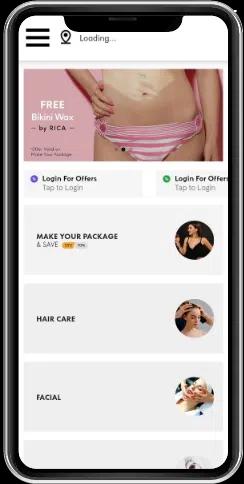Scan for
Download the App
Scan for
Download the App



Are you tired of dealing with frizzy and unmanageable hair? Hair rebonding might just be the solution you're looking for. In this article, we will delve into the world of hair rebonding, exploring what it is, how it works, its benefits, potential risks, and aftercare tips. By the end of this guide, you'll have all the information you need to decide if hair rebonding is the right choice for transforming your locks into silky straight perfection.

Hair rebonding is a popular hair straightening technique that aims to transform curly, wavy, or frizzy hair into sleek, straight locks. It involves using chemicals to break down the natural bonds in the hair and then reforming them in a straight pattern. The result is smooth, shiny, and straight hair that requires minimal styling efforts.

The hair rebonding process typically begins with a consultation with a professional hairstylist. During this stage, the stylist will assess your hair's condition, check for any damage, and determine if hair rebonding is suitable for you. If your hair is healthy enough for the treatment, the stylist will proceed with the following steps:
Your hair will be thoroughly washed and dried to ensure it is free from any dirt, oils, or styling products.
The hair rebonding chemical will be carefully applied to your hair, targeting the natural bonds responsible for its current texture.
After the chemical is applied, the stylist will use a hair straightener to straighten and fix the hair into the desired straight pattern.
To lock in the straightness and nourish the hair, a conditioning treatment is applied.

One of the main benefits of hair rebonding is that it effectively eliminates frizz, leaving you with smooth and manageable hair even in humid conditions.
Rebonded hair requires minimal styling time, as it naturally falls into a sleek and straight pattern, reducing the need for extensive styling products.
Hair rebonding results can last for several months, depending on your hair's growth rate and the aftercare measures you take.
While your hair will be straight, you can still experiment with various hairstyles and updos for different occasions.

Before deciding to undergo hair rebonding, there are essential factors to consider to ensure the best results and minimize potential risks.
A thorough assessment of your hair's health is crucial to determine if it can withstand the chemical process involved in hair rebonding.
Always opt for an experienced and reputable salon with skilled professionals who have expertise in hair rebonding.
Understanding the step-by-step process will help you prepare mentally for the treatment and know what to expect.

The first step involves discussing your hair goals with the stylist and analyzing your hair's texture and condition.
Before starting the rebonding process, your hair will be washed and dried to ensure it is clean and ready for the treatment.
The rebonding chemical is applied to break down the natural bonds in the hair.
The stylist uses a hair straightener to straighten and fix the hair into a straight pattern.
A final conditioning treatment is applied to nourish and lock in the straightness.

After getting your hair rebonded, proper aftercare is essential to maintain the results and keep your hair healthy.
Use a mild shampoo and conditioner suitable for rebonded hair, and avoid rough towel-drying.
Frequent trims prevent split ends and maintain the shape of your rebonded hair.
Avoid excessive exposure to heat and protect your hair from the sun's harmful UV rays.
Minimize the use of styling products containing harsh chemicals that could damage your rebonded hair.
Keep your body and hair hydrated with plenty of water and a balanced diet.

While hair rebonding can be a game-changer for many, there are potential risks to be aware of.
Excessive chemical treatment can cause damage and breakage, especially if the hair is not properly cared for.
Some individuals may experience allergic reactions to the rebonding chemicals, so it's essential to do a patch test before the treatment.
Maintaining rebonded hair requires regular touch-ups, which can add to the overall cost.

Hair rebonding can work for various hair types, although the results may vary.
People with naturally straight hair might not need hair rebonding, as they already have the desired texture.
Hair rebonding can transform wavy hair into straight and manageable locks.
For those with curly hair, hair rebonding can provide a straight and sleek look.
Hair that has been previously chemically treated may need additional care before rebounding.
Hair rebonding offers a fantastic option for those seeking a long-term solution for frizzy and unruly hair. With its transformative effects and easy maintenance, it's no wonder that many people opt for this treatment. However, it's essential to consider your hair's health, choose a professional salon, and follow proper aftercare to get the best results. Remember, while hair rebonding can be a game-changer, it requires care and attention to keep your hair looking its best.
It's best to wait for at least two weeks after rebonding before coloring your hair to avoid additional stress on your hair.
The results of hair rebonding can last for four to six months, depending on your hair's growth rate and maintenance.
Yes, you can style your rebonded hair with hot tools, but it's essential to use heat-protectant products to prevent damage.
It's generally not recommended to undergo hair rebonding during pregnancy due to the use of chemicals.
While swimming is possible, avoiding exposing your rebonded hair to chlorinated or saltwater for extended periods is advisable.